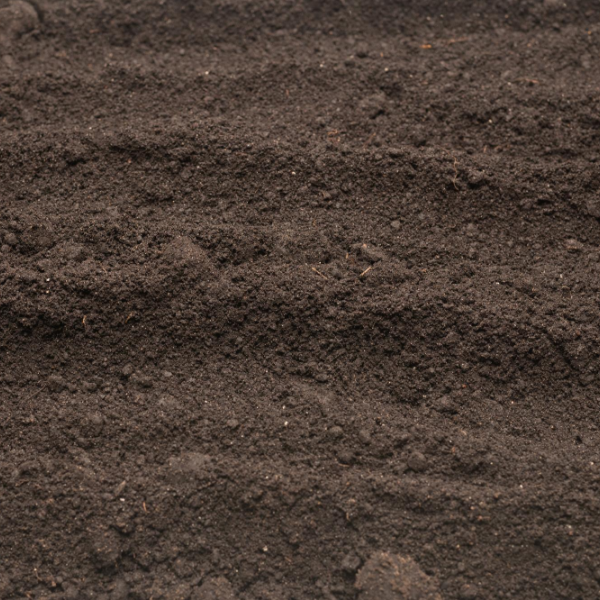- Lawn Turf
- Artificial
- Soil
- Timber
- Composite Decking
- Paving & Stone
Get In Touch With Our Experts Today!
Give us a Call! - Seed & Fertiliser
- Dressing
- Bark

September 15, 2025 Horticultural LoamSoil ConditionerTopsoilTopsoil Tips
Topsoil is more than just ‘soil’. It offers a lifeline to struggling turf and plants, creating vibrant gardens, show-stopping lawns, and flourishing landscapes. Whether you’re a homeowner laying fresh turf or a landscaper delivering top-tier results, understanding when and how to use topsoil and choosing the right type is vital. This guide provides everything you need to know about topsoil, ensuring you reap all its benefits.
Topsoil is an essential ingredient for successful turf, landscaping and vegetation growing. It’s a nutrient-rich mixture that can be mixed into existing soil to help boost its nutrient content. It is often used in turf installation as it helps create an even base for laying rolls of turf, as well as feeding new grass roots with the nutrients they need to thrive.
Whether you’re applying topsoil to turf installation, flowerbeds or vegetable patches, you want your layer of topsoil to be about 2 to 8 inches deep. This is vital for water retention, effective drainage and providing a high level of goodness to your turf or plants.
A good quantity of topsoil will also help balance your soil’s pH levels and improve its structure, ultimately supporting the growth of your grass, plants and veggies. Head to our topsoil calculator to figure out exactly how much topsoil you need for your project.
Topsoil can be applied at any time of the year. If the ground is frozen, we recommend waiting for it to thaw before applying topsoil to ensure it embeds effectively. Most landscapers include topsoil when laying new turf or creating flowerbeds. Meanwhile, gardeners typically use topsoil in the spring to support the start of the growing season and in autumn to protect their plants from harsh weather conditions.
Applying topsoil depends on the type of landscaping you’re completing and your desired outcome. For example, a flat, even lawn or flavoursome vegetables! The time of year has very little to do with it, but multiple benefits come from using topsoil.
Here are the best ways to use topsoil for optimum results.
Topsoil needs to be included in your turf installation process. Once you’ve fully prepared the ground ready for turf, this is when you apply 2-8 inches of high-quality topsoil. Rake over the topsoil to create an even surface for your turf rolls, and dampen slightly to prevent it from shifting.
Are you laying new turf? Head to our ultimate turf laying guide for step-by-step support, and a video demonstration from George himself!
Is your lawn experiencing more dips and divots, creating an uneven appearance? In these instances, there’s often nothing wrong with your turf; it just needs to be levelled out underneath. Scatter a layer of topsoil across your lawn, adding more to the dips and uneven patches. This will encourage your grass to grow more evenly.
Sometimes, you don’t need to roll out a brand-new lawn. Grass seed is an effective option for repairing and restoring stressed grass. However, grass seed can be washed away by rain, blown away by wind or eaten by birds. To prevent these instances and to give grass seed the best chance, add a layer of topsoil to provide a stable base for seeds to take root.
If parts of your garden are struggling to grow, this may be due to poor soil quality, pH imbalances or a weak soil structure. Consider adding a soil conditioner to revitalise tired soil. Start by removing the top couple of inches of soil and replacing it with nutrient-rich topsoil. Work this into the existing soil to revitalise it and help plants to grow.
Adding a rich topsoil, such as Horticultural Loam, to your flowerbeds will create the ideal texture for seeding and root development. It provides a robust foundation for them to establish themselves, helping them thrive throughout the seasons. Remember, for plants that favour acidic soil, opt for the ericaceous soil instead.
Our Raised Bed Mix combines organic nutrients with a robust topsoil texture. This not only provides your fruit and vegetables with the organic nutrients they need to grow bigger, brighter and full of flavour, but it also provides a stable base for them to withstand extreme weather conditions.
Heavy downpours and freezing temperatures put your turf, flowers, and plant roots at risk. By adding a layer of topsoil on exposed soil or vulnerable areas, you can help protect them from frost damage or waterlogging. It also helps prepare the ground for spring!
Investing in quality topsoil and applying it correctly is the foundation for enduring beauty, stronger growth, and healthier lawns and gardens.
For expert guidance or help choosing the best topsoil, browse our range of topsoil or get in touch with our specialists. Landscapers can also take advantage of our Trade Accounts for bulk orders and project support.
CALL US NOW ON 01234 818 253